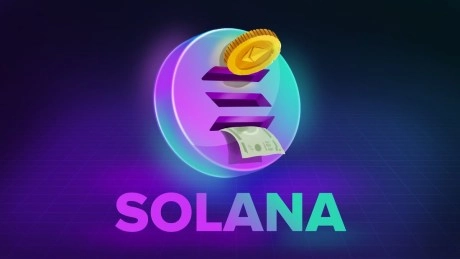- Homepage
- >
- News
- >
- Business
- >
- BTC’s price surge offers miners relief…but for how long?
Block reward miners are experiencing a rare period of near-profitability as BTC tops the $100,000 mark, but rising network difficulty and cutthroat competition mean they’re only one plunge away from negative returns.
Publicly traded BTC miners have released their November production updates, but first let’s talk about the trend that all the cool mining kids are into these days. That is, buying BTC with borrowed cash rather than going through the hassle of actually mining new BTC tokens.
On December 9, Riot Platforms (NASDAQ: RIOT) announced plans to raise $500 million in new debt, although that sum could increase by $75 million, depending on the response from “persons reasonably believed to be qualified institutional buyers.” Riot will use the proceeds “to acquire additional [BTC] and for general corporate purposes.”
Riot already holds over 11,000 BTC, just one of several mining operators to have embarked on a corporate ‘reserve’ strategy that pledges never to sell their tokens—regardless of how they were acquired—based on their belief that David Clayton Thomas was lying and ‘number go up’ will go up forever.
Several days prior to Riot’s announcement, rival Hut 8 (NASDAQ: HUT) announced that it had entered into a new ‘Controlled Equity Offering Sales Agreement’ that could see it raise up to $500 million by selling shares. Hut 8 will use the proceeds to acquire or develop “power and digital infrastructure assets such as data centers, as well as the purchase of [BTC] as a strategic reserve asset.”
In late November, MARA (NASDAQ: MARA), formerly Marathon Digital, raised $1 billion via new debt and immediately spent $615 million of that buying more BTC, bringing its HODL hoard to 34,959 tokens (as of November 30). On December 4, MARA raised another $850 million to acquire still more BTC, along with some gear related to actual mining (assuming there’s any cash left over).
MARA’s fanaticism on this front recently saw the company publicly beg the U.S. government to spend billions buying BTC to lock away as a ‘strategic reserve asset.’ Translation: there are practical limits to how much MARA can borrow to artificially inflate BTC’s fiat price, whereas the government can saddle future generations with unlimited debt to buy these utility-free digital gold bricks.
And yet, this same period saw Core Scientific (NASDAQ: CORZ) announce a $550 million debt issue that will not—repeat, not—be used to buy BTC. Ditto for Iris Energy (NASDAQ: IREN), which raised $440 million to pay its bills rather than take part in the great BTC Boosting Boondoggle™. Heretics.
Hardware and tear
The surge in BTC’s fiat price has made mining temporarily profitable for operators, although the mining hash rate continues to climb, forcing miners to upgrade their hardware more frequently than they’d prefer just to stay competitive.
Last month, Miner Mag reported that publicly traded miners had spent over $3.6 billion on property, plant and equipment (PPE) in the third quarter of 2024, a significant chunk of the over $5 billion these same miners raised through equity and debt financing during Q3. The majority of that $3.6 billion went for hardware purchases, and there’s no sign of this issue alleviating itself anytime soon.
On December 2, Hive Digital Technologies (TSXV: HIVE) announced that it had acquired 13,480 new Bitmain S21+ Hydros rigs, with an option to purchase a similar number of additional units within the next year. Hive says its expanded capacity will allow it to produce around nine BTC per day at the current mining difficulty level. The cost of the new rigs wasn’t disclosed.
MARA recently acquired a wind farm in Hansford County, Texas, that it intends to use as a means of extending the lifecycle of “last-generation ASIC mining hardware that would have otherwise been written off or sold into the secondary market.” The wind farm is capable of generating 114MW of wind capacity “at zero-marginal energy cost,” helping to lower the company’s overall breakeven point for mining new BTC.
Bitmain looks to dodge Trump tariffs
President-elect Donald Trump’s pledge to make America “the world’s undisputed [BTC] mining powerhouse” appears to have struck a chord with the aforementioned mining rig manufacturer Bitmain.
On December 9, the China-based Bitmain’s X account announced “the launch of its new production line in the United States,” which will “provide faster response times and more efficient services” to its North American customers. The announcement offered no details on where this production line will be based, but the first batch of Bitmain’s Antminer S21 Pro units will reportedly be “delivered this December.”
Last month, reports surfaced that Bitmain’s U.S.-bound shipments of new mining rigs were being held up by the U.S. Customs and Border Protection Agency (CBP), reportedly at the request of the Federal Communications Commission (FCC). Seven U.S. mining companies were said to be waiting on the Bitmain shipments.
That holdup followed October reports that Taiwan Semiconductor Manufacturing Company (TSMC) (NASDAQ: TSM) had suspended shipments to Xiamen Sophgo, a China-based chip designer affiliated with Bitmain. A Sophgo chip was found on an AI processor made by Chinese tech giant Huawei, which is prohibited from buying TSMC chips under U.S. export controls.
In response, Bitmain issued a terse statement denying that it was “involved in or otherwise related to the supply chain investigation as reported by the media.” Bitmain threatened to “take legal action against such media that publishes and disseminates false information.”
Trump, who won’t take power until January 20, has promised to impose punitive tariffs on certain countries exporting goods to the U.S., including China. Bitmain appears keen on not finding itself in the path of that fast-moving train.
Costs and losses on the rise
The past few weeks saw a couple of major miners turn in their financial report cards, including CleanSpark (NASDAQ: CLSK), reporting 125% revenue growth in its fiscal year ending September 30, 2024. And yet, the company still lost $149 million in FY24 as its costs rose 43%, somehow resulting in “our strongest year of financial performance to date.” If these results get any stronger, CleanSpark will have to file for bankruptcy.
Australia’s IREN lost $51.7 million in its fiscal Q1 2025 (the three months ending September 30), as its mining revenue fell by $4.7 million from the previous quarter to $49.6 million. A modest $700,000 rise in its AI Cloud Services revenue to $3.2 million proved insufficient to close that gap.
To their credit, IREN is one of the few miners that reports the full cost of its operations, including the depreciation of mining rigs. During its fiscal Q1, each newly mined BTC cost IREN over $116,000, while the average value of each BTC acquired during the quarter was less than $95,000.
Small wonder then, that miners continue to ditch BTC mining in favor of serving as AI data centers and other high-performance computing (HPC) projects. Still, others are choosing to focus on mining tokens other than BTC, like the Shenzhen-based BIT Mining (NYSE: BTCM), which claims to be raking it in by mining Dogecoin (DOGE) and Litecoin (LTC).
BIT Mining said its “commitment” to mining DOGE and LTC “has proved to be nearly three times more profitable than mining BTC alone.” Nonetheless, the company recently announced a cash-and-stock deal to acquire some BTC mining ops in Ethiopia, so suck it, Elon.
A November to dismember
The major publicly traded miners have all turned in their November production reports, which are presented below in descending order of BTC-producing magnitude.
- MARA produced 907 BTC in November, up from 717 in October, thanks to a 15% rise in energized hash rate. MARA won 254 blocks in November, a new company record. Counting the 6,474 BTC that MARA bought on the open market in November, MARA has added 21,528 tokens to its ‘reserve’ in the first 11 months of 2024.
- CleanSpark mined 622 BTC in November, down from 655 in October, despite hash rate rising 7% month-over-month and achieving a new daily high of 21.65 BTC mined. CleanSpark sold 26 BTC in November, leaving its total BTC holdings at 9,297. The company hopes to boost its current hash rate of 33.7 EH/s to 37 EH/s by year’s end and past 50 EH/s in 2025 as new operations come online.
- Riot Platforms produced 495 BTC in November, 10 fewer than in October, as a 7% rise in network difficulty offset a 13% rise in average operating hash rate.
- IREN mined 379 BTC in November, down from 439 in October, although the surge in BTC’s price ensured mining revenue grew 16% month-over-month. IREN’s AI Cloud Services revenue fell 10% to $900,000 but the company is “negotiating with parties on additional AI monetization opportunities.”
- Core Scientific self-mined 314 BTC in November, down from 369 in October, as hash rate dipped slightly. Not one for HODL’ing, Core sold 272 BTC in November, netting $23.2 million in the process.
- Bitfarms (NASDAQ: BITF) generated 204 BTC in November, down from 236 in October, and sold 171 BTC. An 11% rise in hash rate couldn’t overcome the rise in network difficulty, but Bitfarms just did a deal for 19,000 new mining rigs that will be delivered this month and next and are expected to boost efficiency by 10% in H1 2025.
- Cipher Mining (NASDAQ: CIFR) mined 202 BTC in November, up from 168 in October, although it also sold 234 BTC last month, reducing its reserve to 1,383 tokens.
- Bitdeer (NASDAQ: BTDR) self-mined 150 BTC in November, 24 fewer than in October, as the delivery of some 11,000 new rigs was allocated to the company’s hosting unit, not its proprietary mining ops.
- TeraWulf (NASDAQ: WULF) self-mined 115 BTC in November, down from 150 in October, as its hash rate fell again due to a “brief planned outage” to complete some repairs, upgrade existing fleets, and onboard new rigs. Once all this work is done, Terawulf anticipates fielding a hash rate nearly two-thirds higher than November’s.
- Hive Digital mined 103 BTC in November, down from 117 in October. The company’s ‘HODL portfolio’ has grown to 2,624 BTC.
- HUT 8 self-mined 94 BTC in November, six fewer than in October, despite the hash rate effectively being unchanged month-over-month. HUT 8 finished November with 9,122 BTC on its balance sheet. Meanwhile, HUT 8 mining client Ionic Digital—which sprang from the ashes of bankrupt crypto asset lender Celsius—terminated its management services agreement with HUT 8 effective December 10, and Ionic claims it’s “prepared to take operational control of the Company’s [BTC] mining sites to minimize any disruption during this transition.” HUT 8 claims Ionic’s claims supporting the termination of this agreement are “meritless,” and HUT 8 will “vigorously enforce its rights.”
This is the last of these updates we’ll be doing this year, so we’ll just have to wait to see how miners Ho Ho HODL through the holidays. And hey, if the bad ones get lumps of coal in their stockings, all the better to power their rigs, right?
Watch: Untangling Bitcoin mining at the CoinGeek Weekly Livestream
title="YouTube video player" frameborder="0" allow="accelerometer; autoplay; clipboard-write; encrypted-media; gyroscope; picture-in-picture; web-share" referrerpolicy="strict-origin-when-cross-origin" allowfullscreen>




